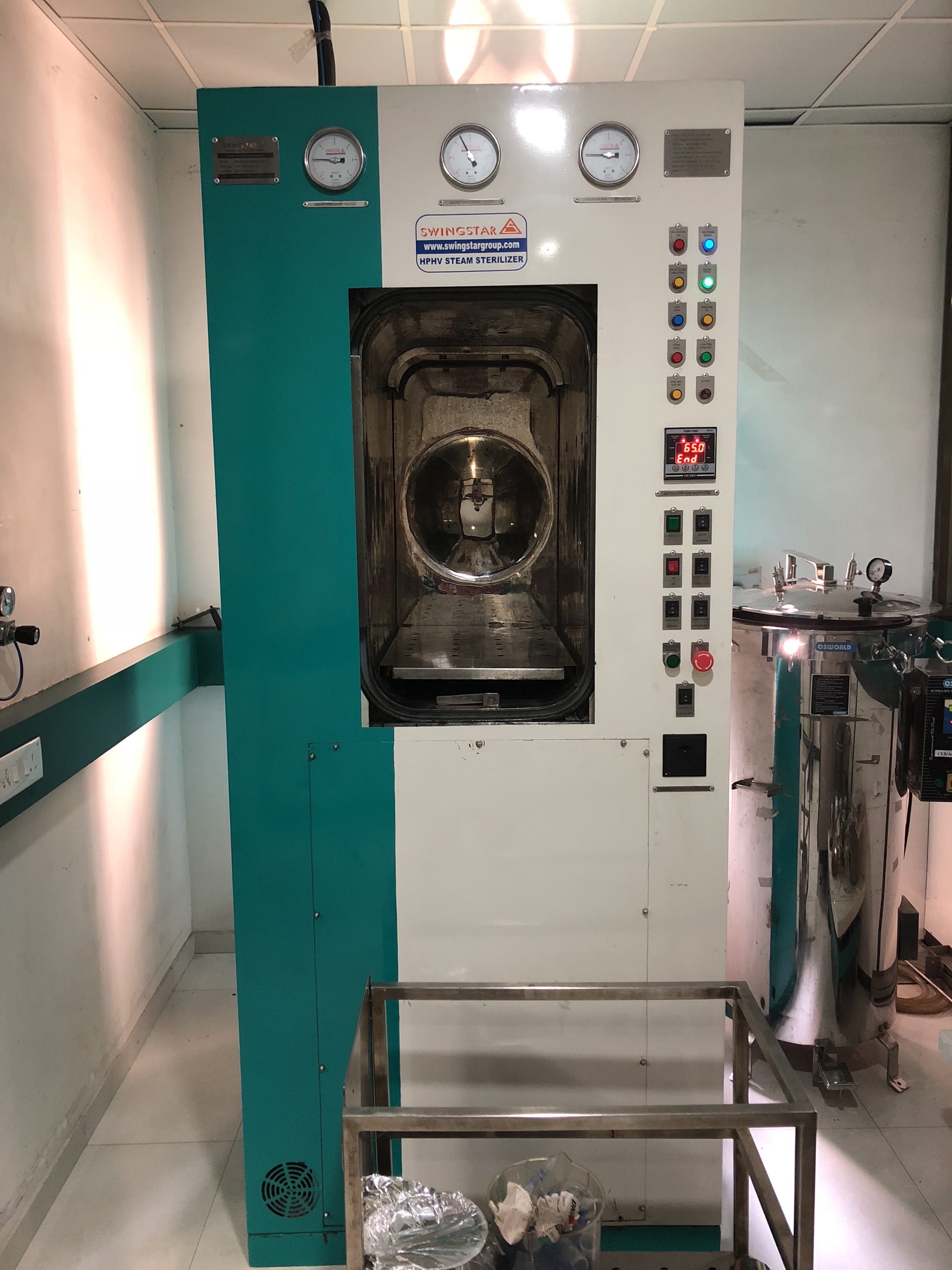Kumi momos (Talk | contribs) |
Kumi momos (Talk | contribs) |
||
| Line 50: | Line 50: | ||
<p>All pipette tips, microcentrifuge tubes, nutrient broth tubes and flasks, agar flasks were autoclaved prior to use.</p> | <p>All pipette tips, microcentrifuge tubes, nutrient broth tubes and flasks, agar flasks were autoclaved prior to use.</p> | ||
<img id="eqp" src="https://static.igem.org/mediawiki/2018/d/db/T--ICT-Mumbai--Safety-Autoclave.jpg"></img> | <img id="eqp" src="https://static.igem.org/mediawiki/2018/d/db/T--ICT-Mumbai--Safety-Autoclave.jpg"></img> | ||
| − | + | <br> | |
| + | <br> | ||
| + | <br> | ||
<h4>Ensuring a contamination Free Environment</h4> | <h4>Ensuring a contamination Free Environment</h4> | ||
<p>Handling of bacteria was done in laminar air flow units. This ensures a contamination free as well as a contained working environment.</p> | <p>Handling of bacteria was done in laminar air flow units. This ensures a contamination free as well as a contained working environment.</p> | ||
Revision as of 11:17, 16 October 2018
Safety
Chassis organisms
For construction of the amplification circuit and all cloning experiments, we used Escherichia coli DH5 alpha. For testing the circuit in our final chassis organism of choice, we transformed the plasmids into Bacillus subtilis. The US Food and Drug Administration (FDA) classifies B. subtilis as a GRAS (Generally Regarded As Safe) organism. Both these organisms are generally recognized as safe and can be used in BS-1 laboratories without problems.
Safe Laboratory Practices
All our experimental work was carried out at DBT-ICT Centre for Energy Biosciences, which boasts of state-of-the art equipment for facilitating microbiological research. As a responsible team, we ensure that all safety regulations are complied with and our experimentation does not pose a risk to us and others around us.
Personal Protective Equipment (PPE)
Appropriate PPE were used in the lab which include lab coats, closed shoes and safety glasses.
Sterile Equipment
All pipette tips, microcentrifuge tubes, nutrient broth tubes and flasks, agar flasks were autoclaved prior to use.

Ensuring a contamination Free Environment
Handling of bacteria was done in laminar air flow units. This ensures a contamination free as well as a contained working environment.

Dealing with hazardous materials
Disposable nitrile gloves were used to handle Ethidium Bromide (EtBr) containing agarose gels since it is a known carcinogen. Used gels as well as EtBr contaminated pipette tips were put in labelled bags that are handed over to a contractor for disposal by incineration at a municipal facility. A UV-protective face shield was used to view gels using a UV Transilluminator.

Disposal of bacterial cultures
Bacterial cultures and used tips and eppendorf tubes were discarded in labelled plastic containers and autoclaved before disposal. Used agar plates were autoclaved before discarding them.
Institute Biosafety Committee
The Institutional Biosafety Committee of our Institute is responsible for ensuring that safe biological practices are followed in all laboratories in the Institute. The Committee meets twice a year to review and recommend biosafety measures. Primary PI of the team, Prof. Arvind Lali, is the Member Secretary of the Committee. Co-secondary PI of the team, Dr Shamlan M. S. Reshamwala, is also a member of the team.
Safety regulation in our country on GMOs
While there are tremendous applications of synthetic biology which can benefit the society, risks associated with using such genetically modified organisms in the wild are significantly alarming. But risks are ubiquitous and unavoidable. Our primary goal must be minimization of risks. One way to manage such risk is governmental oversight (Dhan Prakash, 2011). In India, there are 6 different committees which regulate the release of GMO into wild. The one with ultimate power to allow the release or not is GEAC (Genetic Engineering Approval Committee). No person can manufacture, transport, use, process or sell GMOs without the approval from GEAC. State, Institutional, District level committees,The Recombinant DNA Advisory Committee (RDAC) takes note of developments in biotechnology at national and international level and prepares suitable recommendations.



